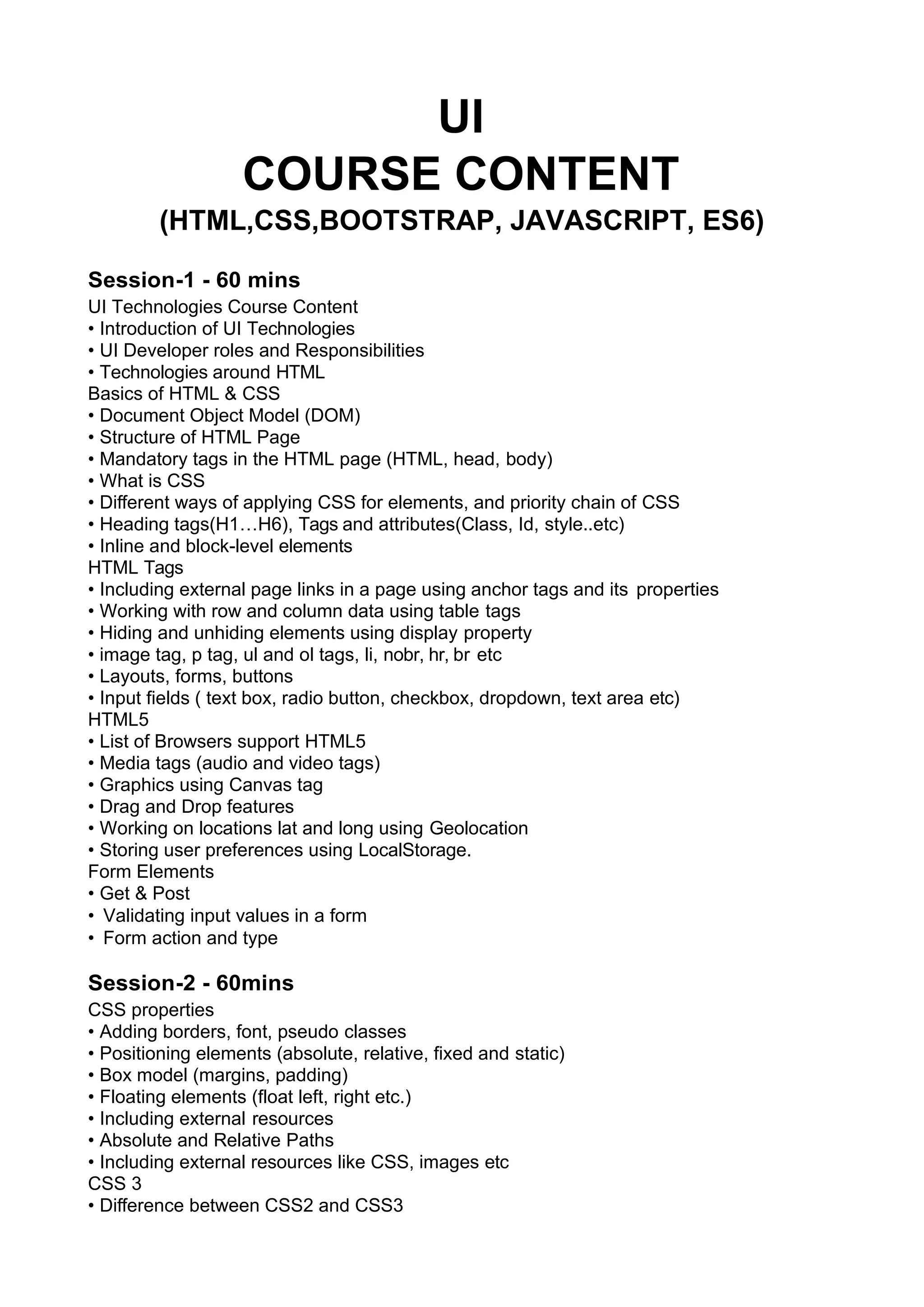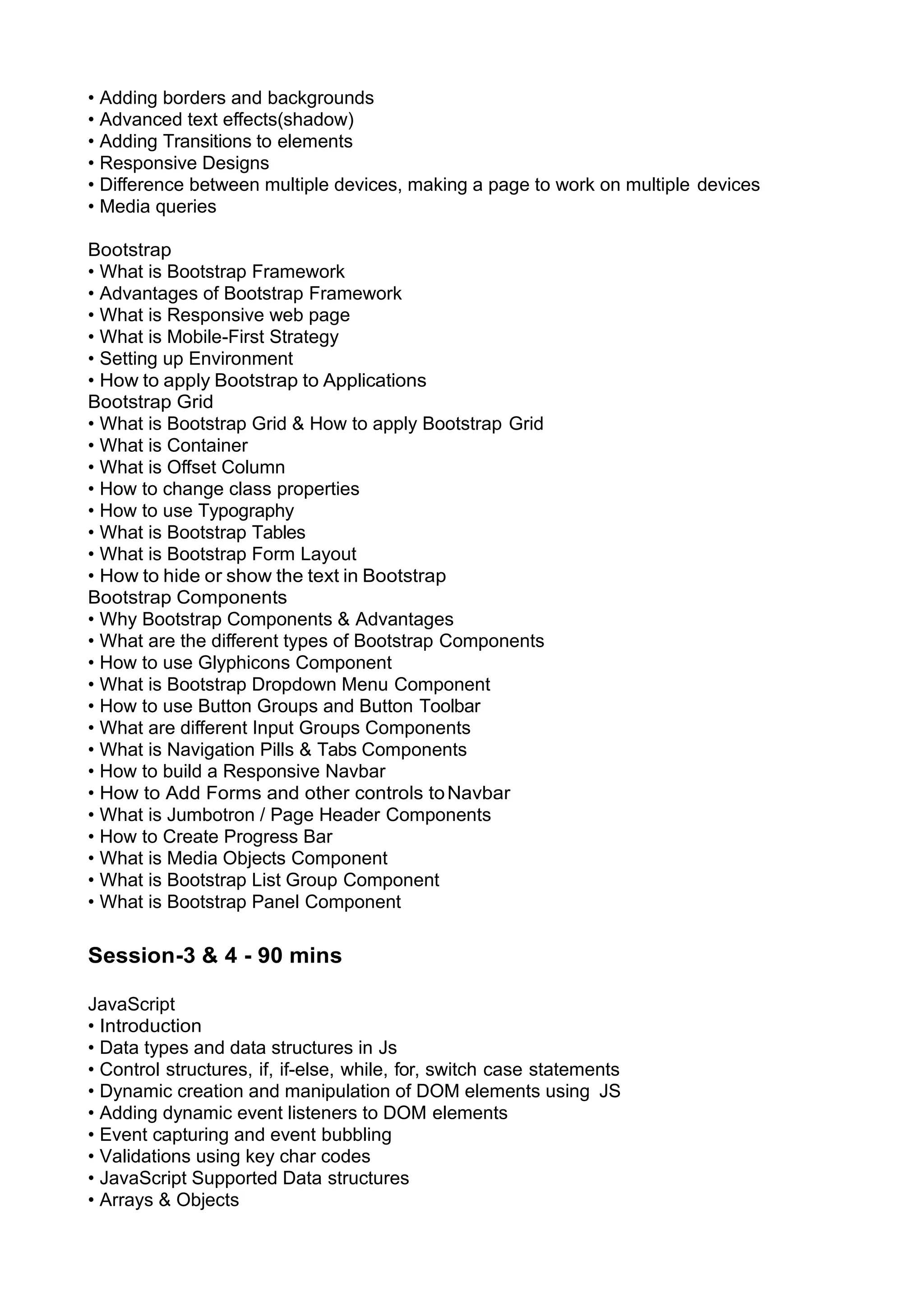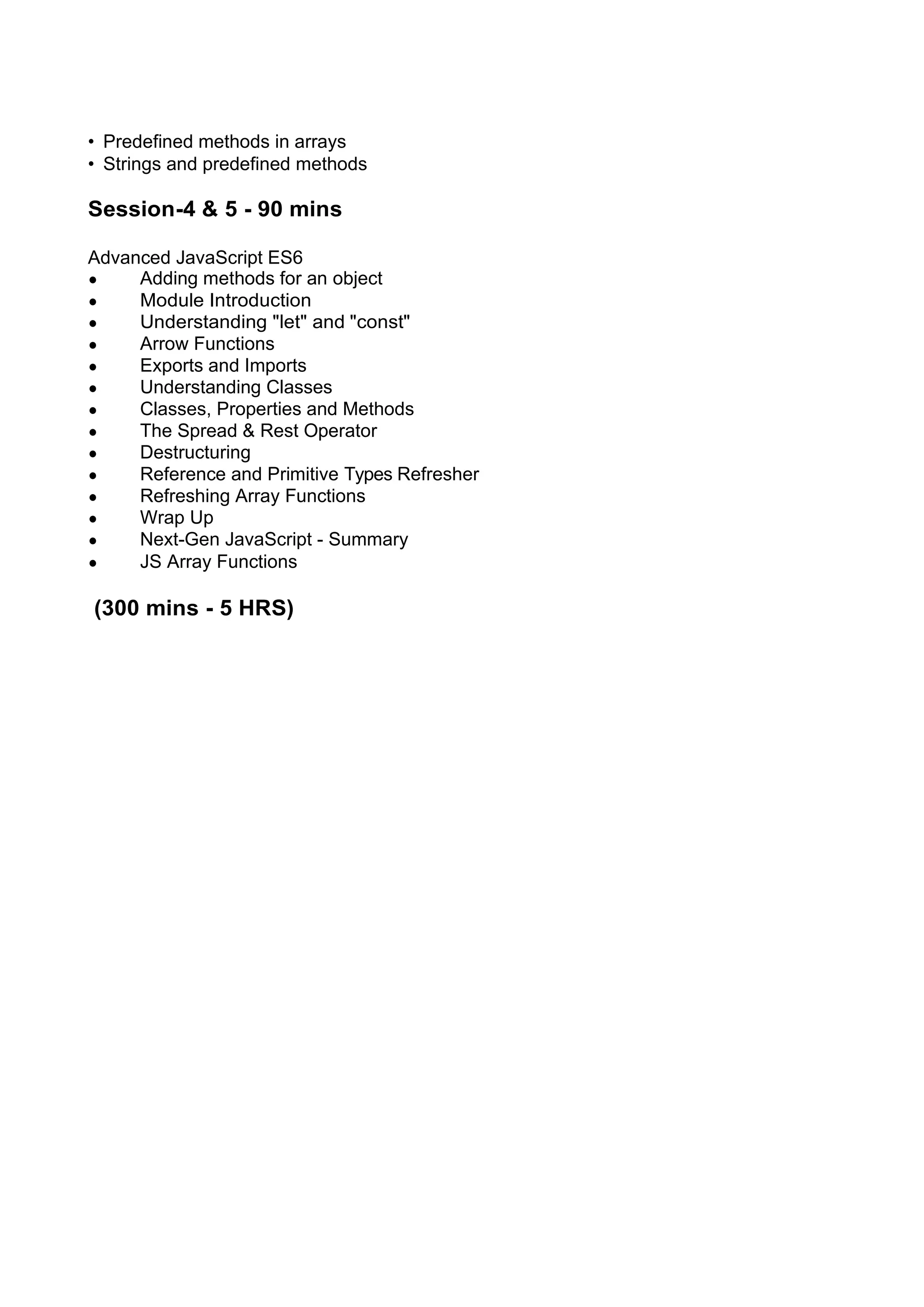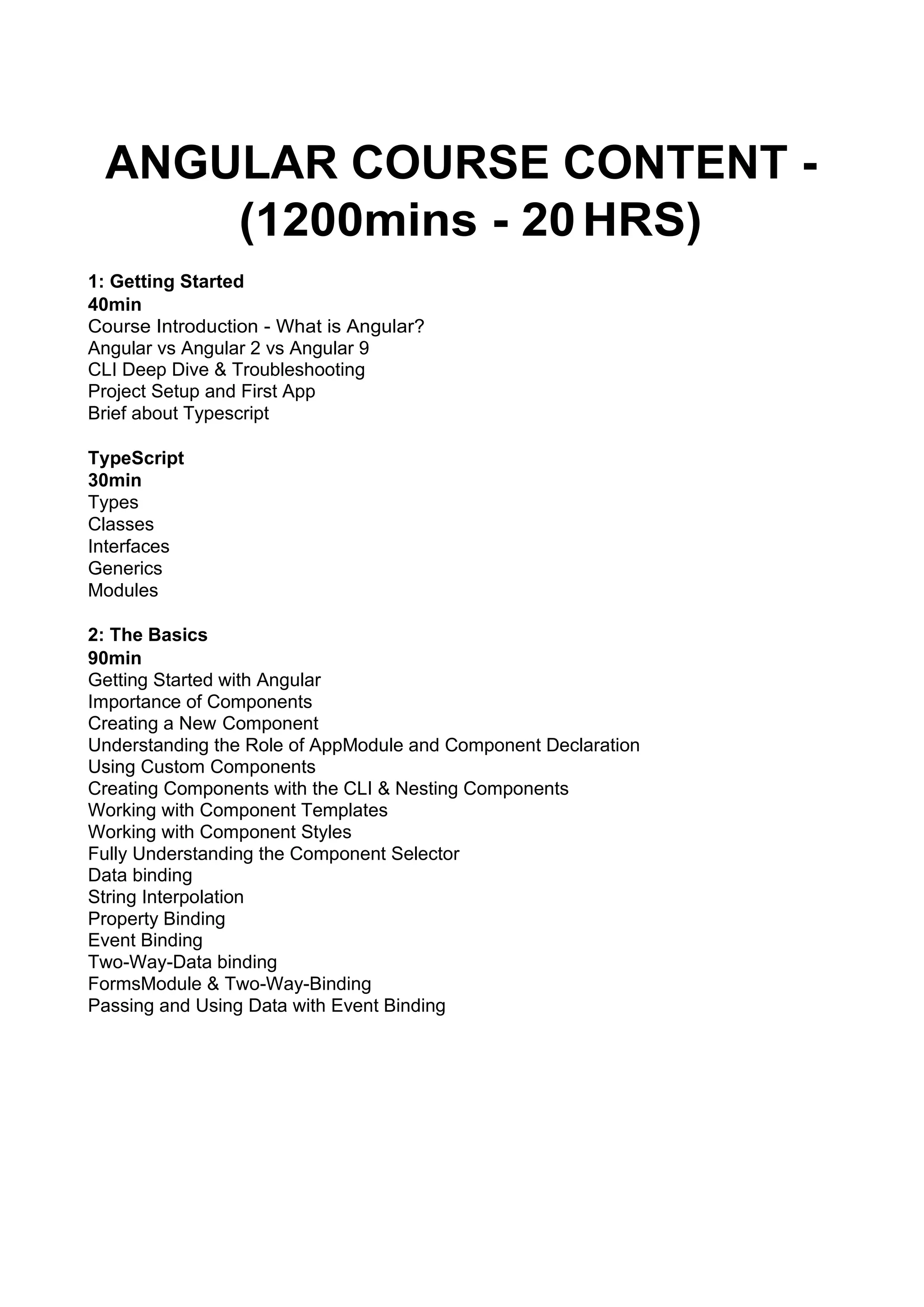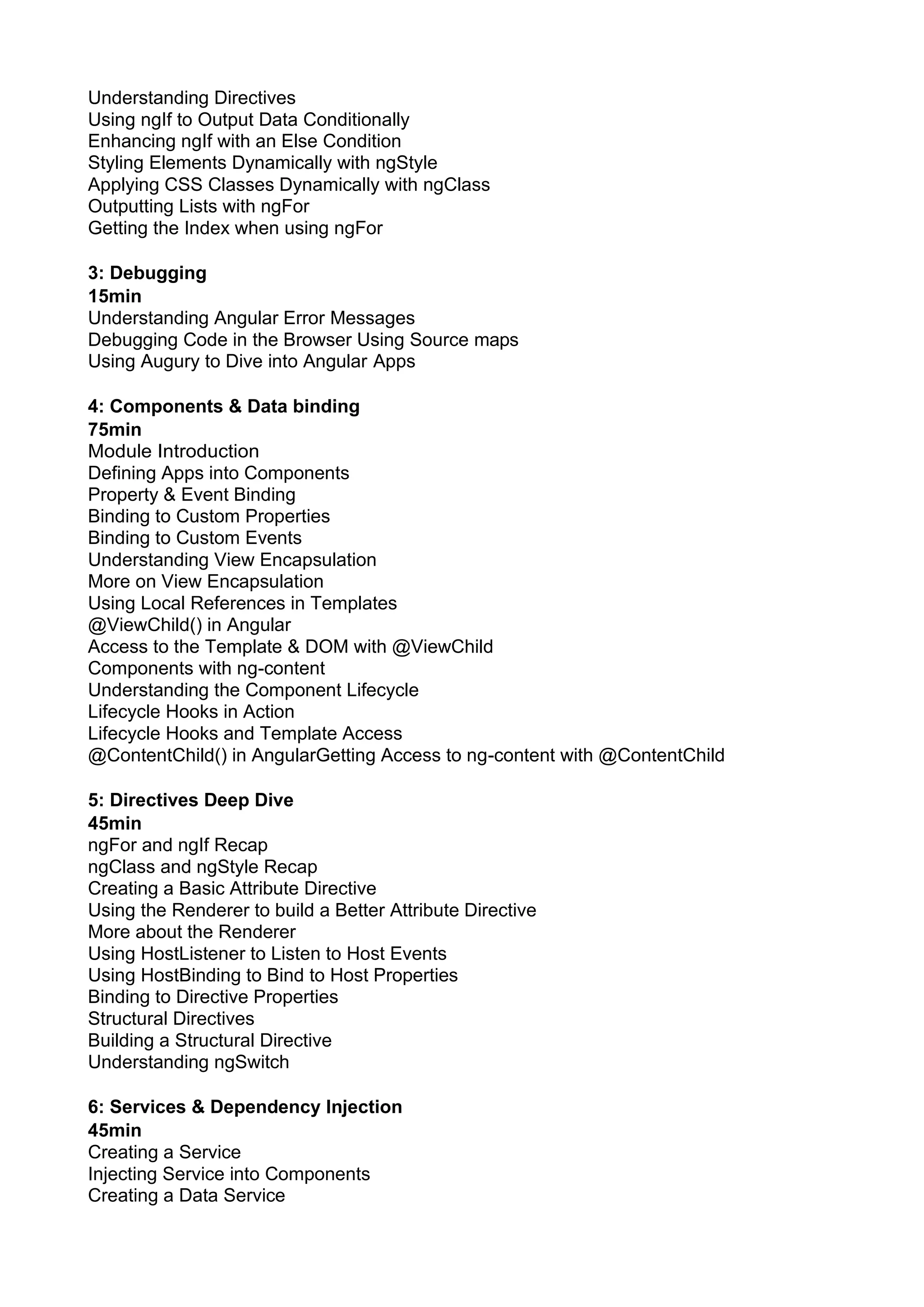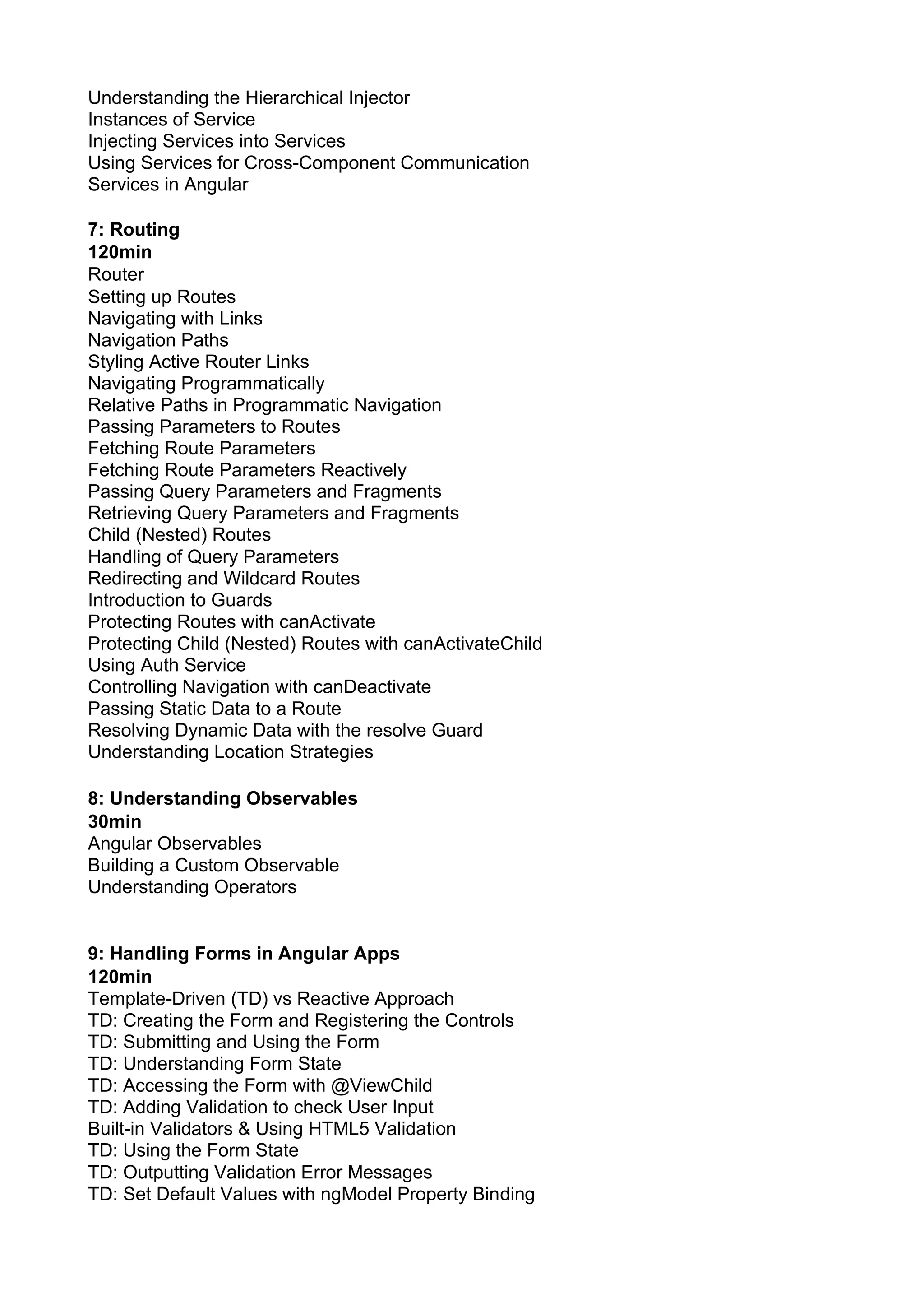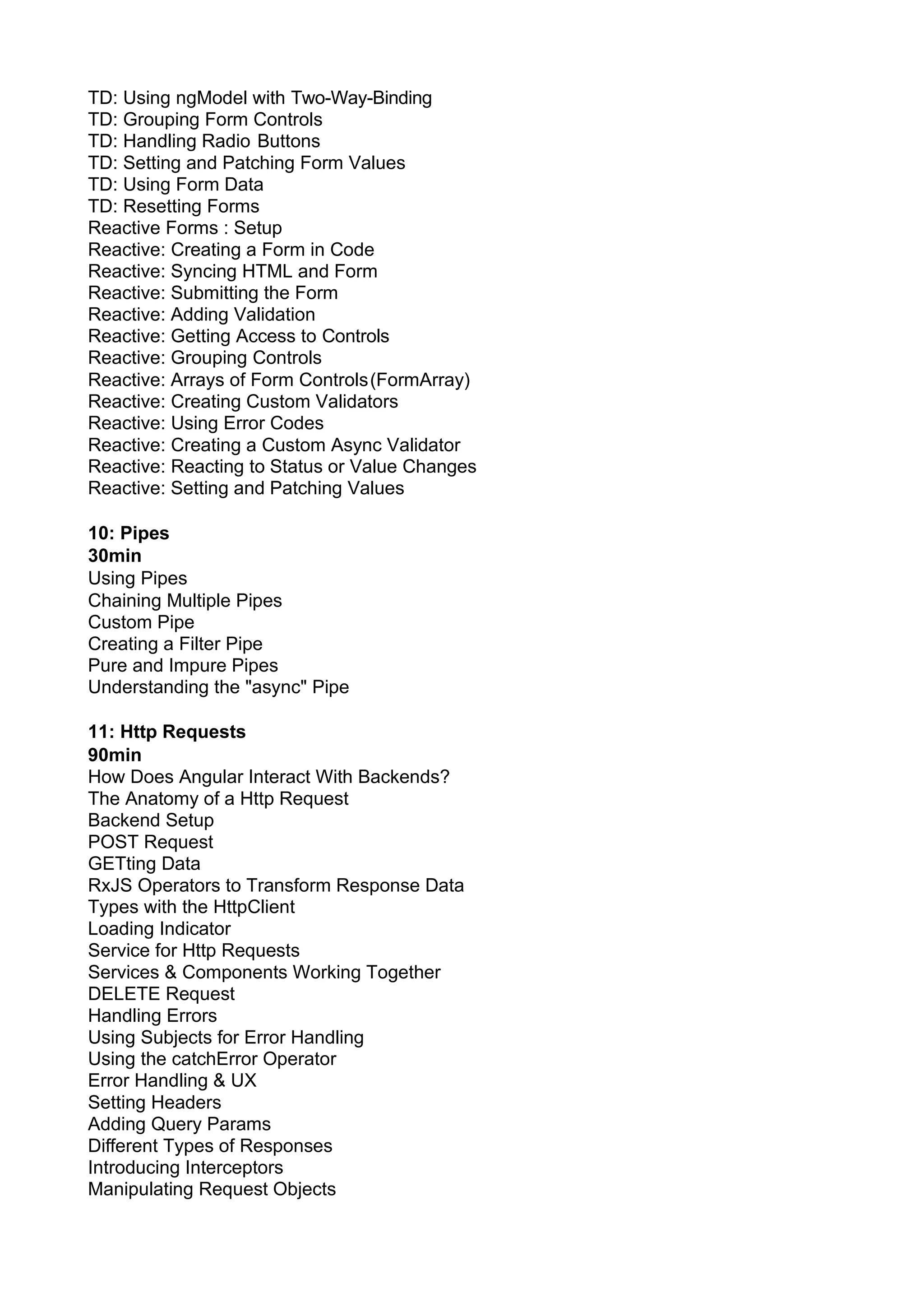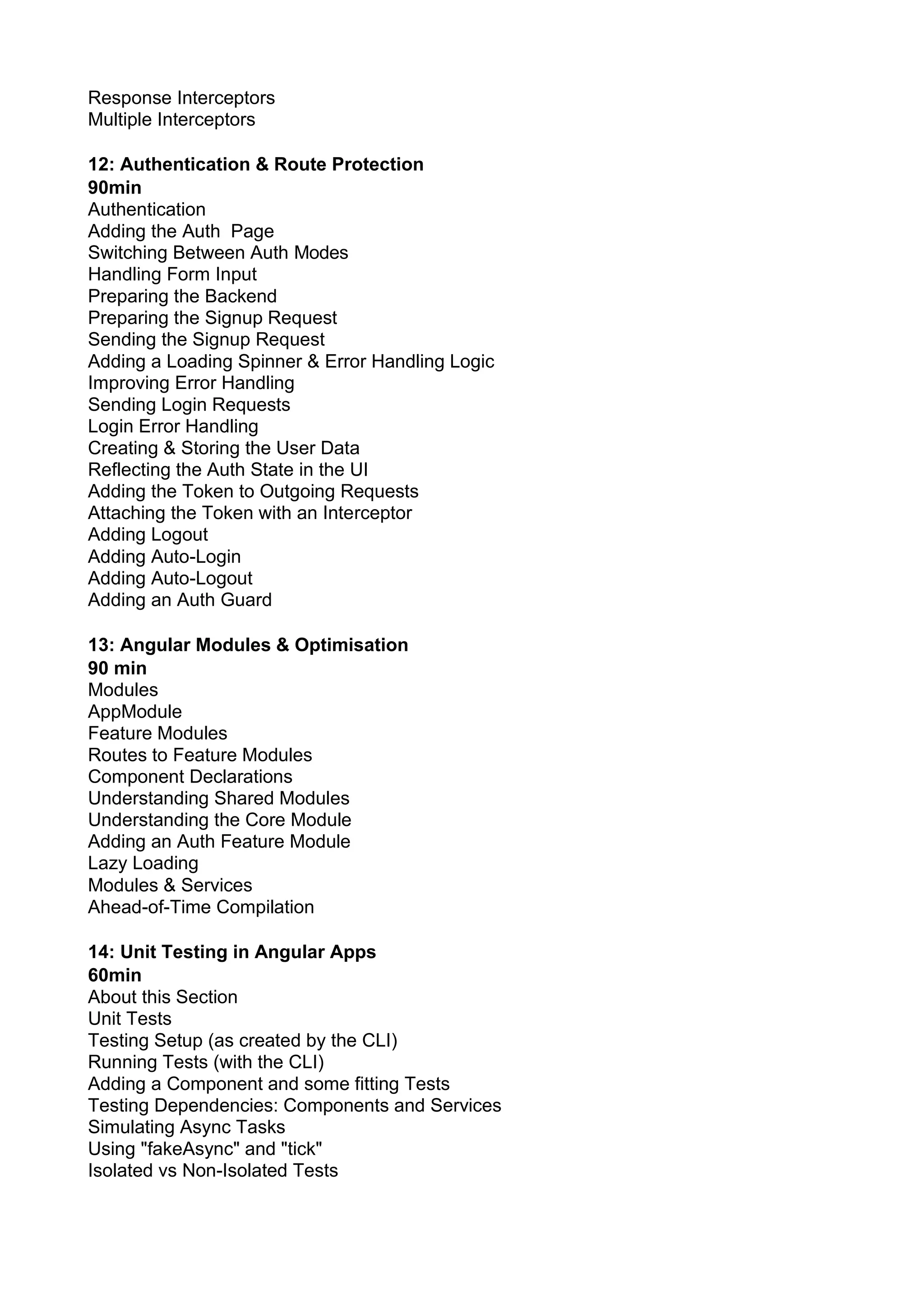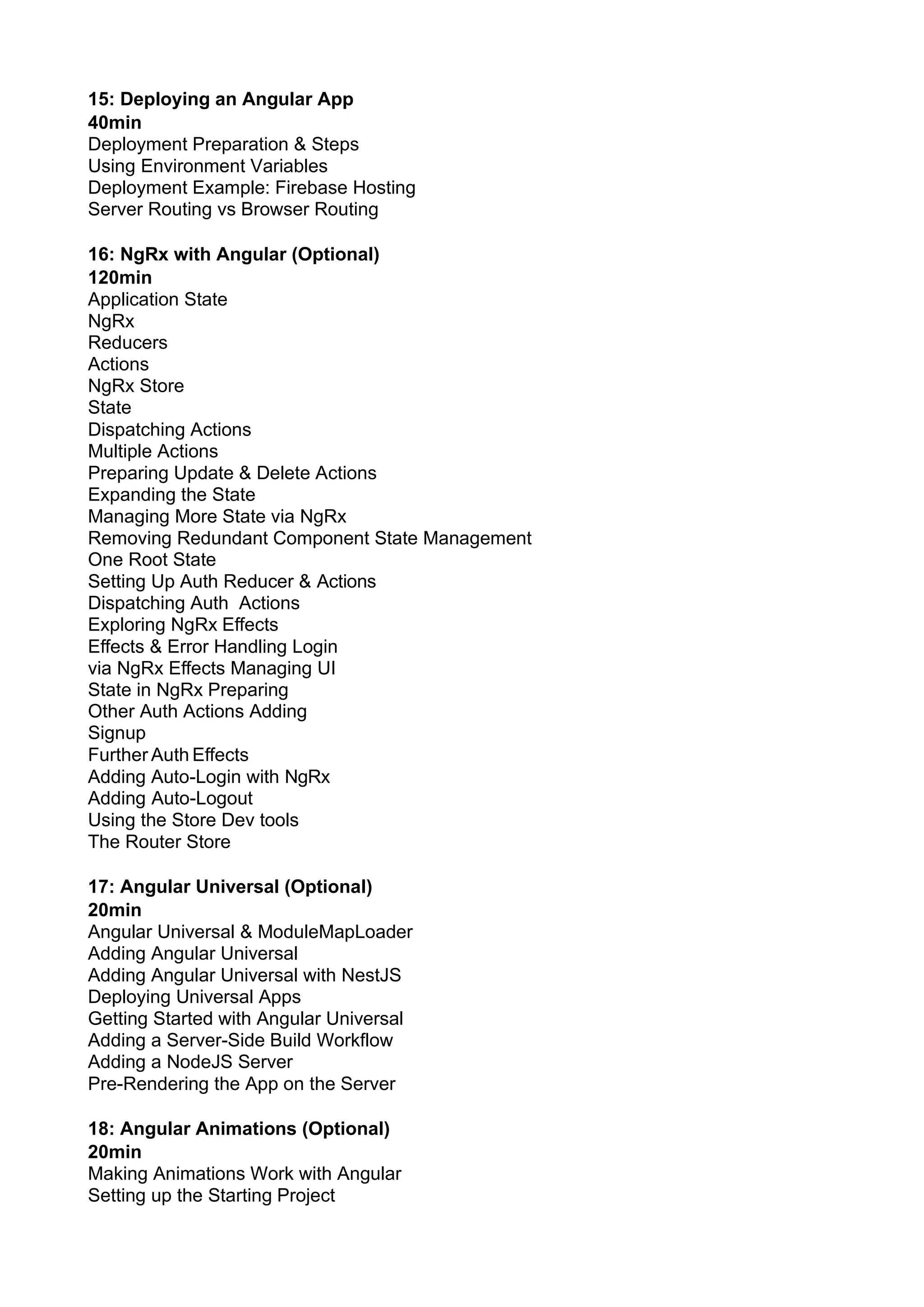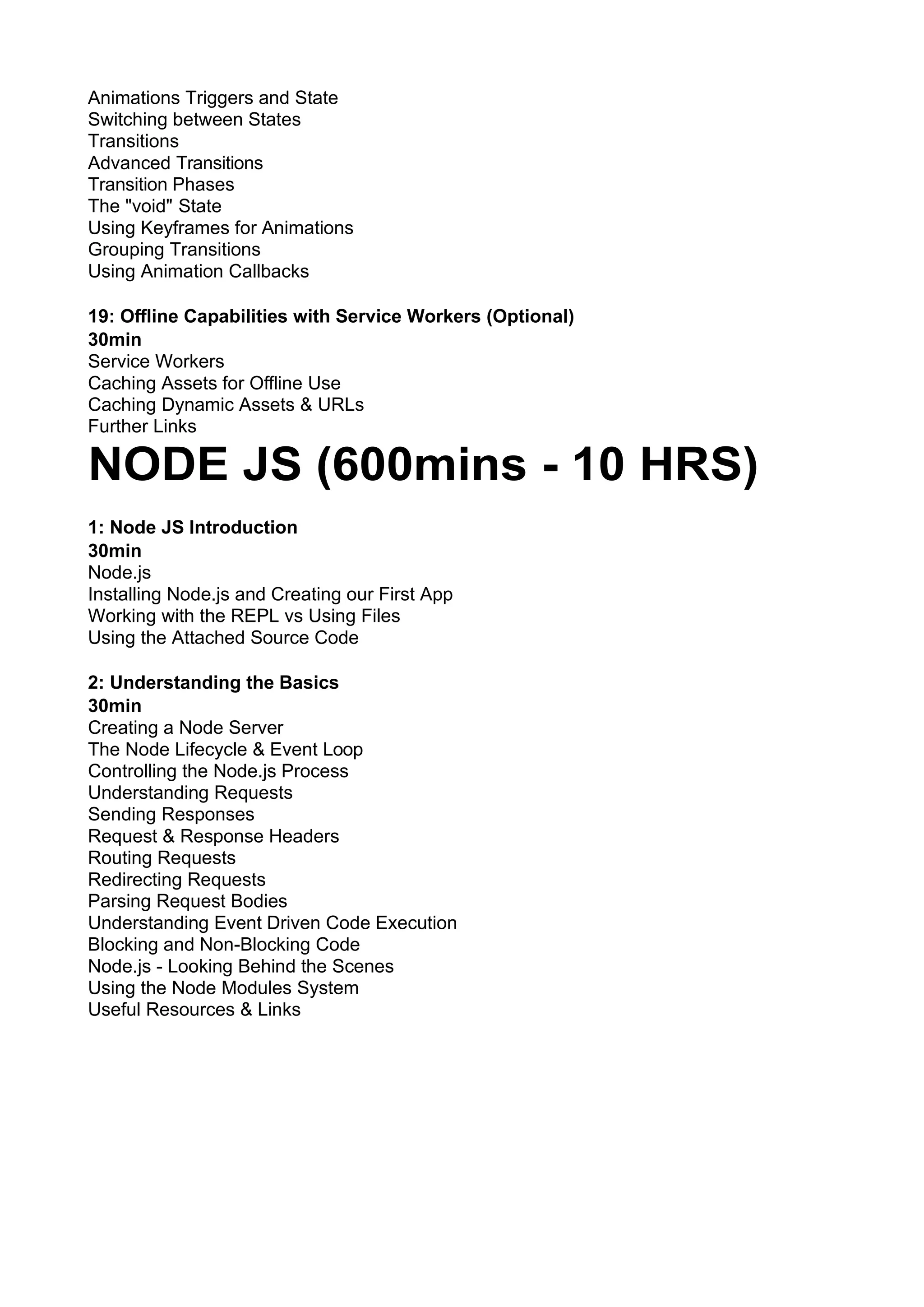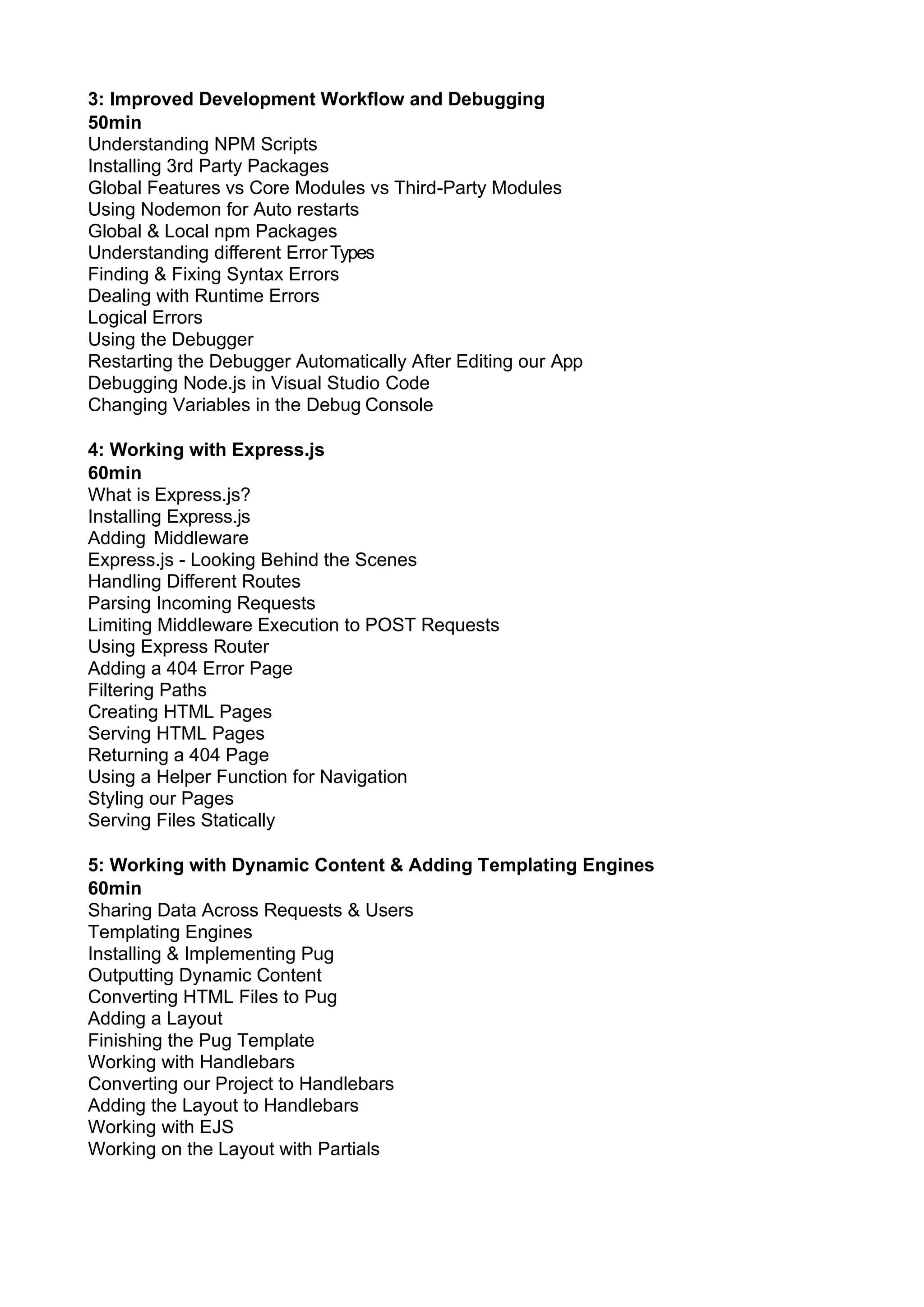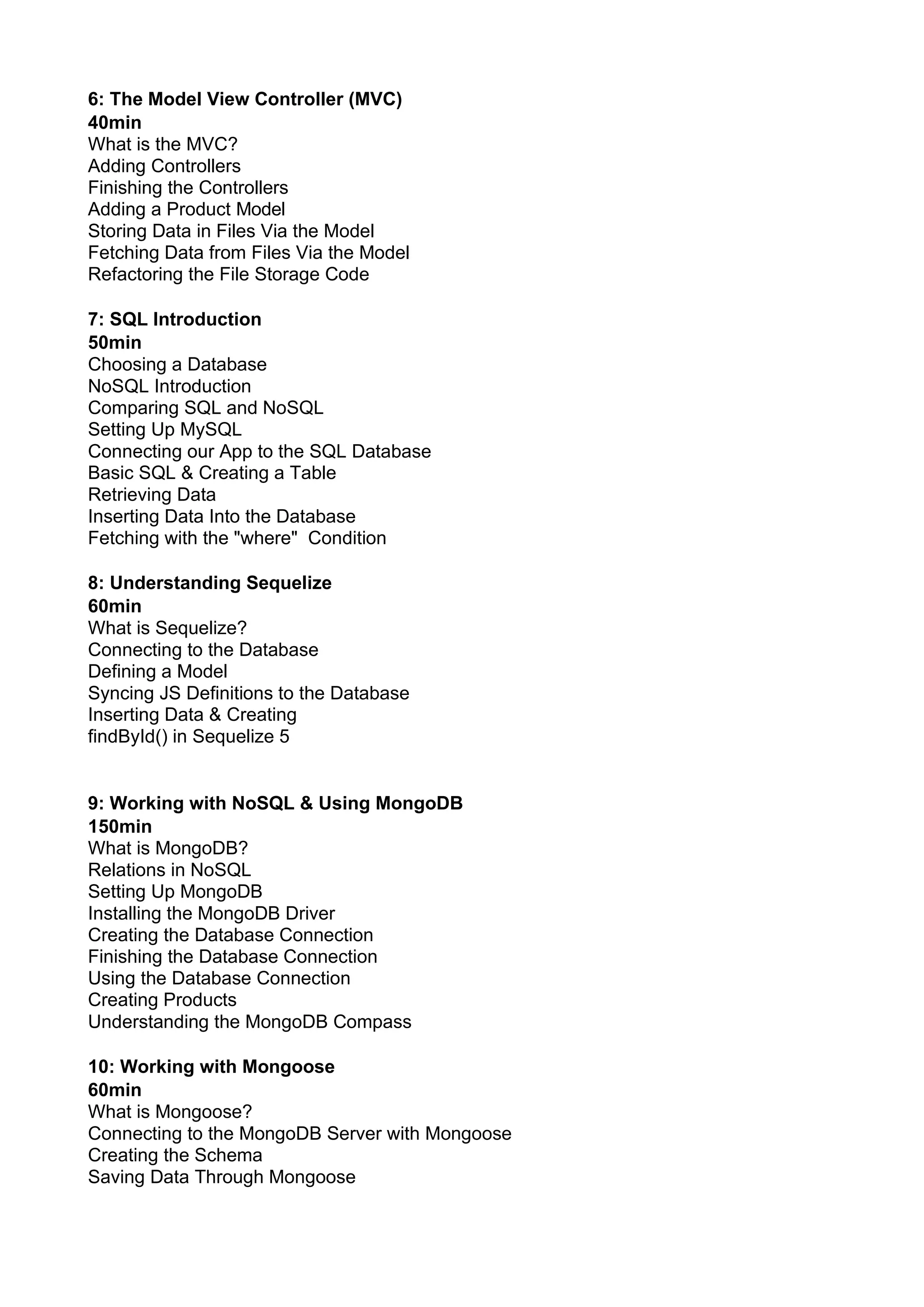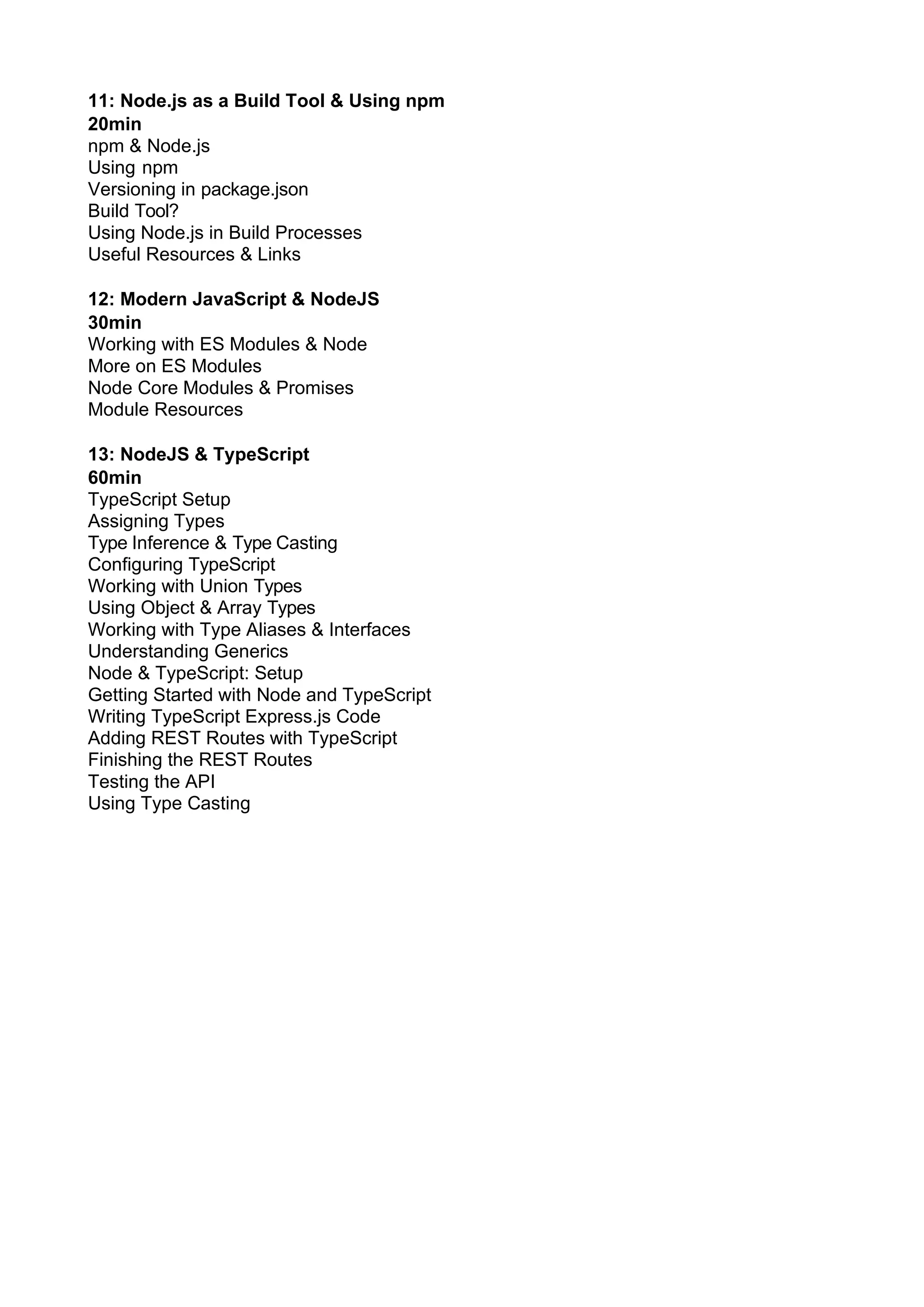The document outlines a detailed curriculum for a UI technologies course, covering key topics such as HTML, CSS, Bootstrap, and JavaScript, stretching across multiple sessions. It delves into advanced JavaScript features like ES6, Angular fundamentals, and Node.js concepts, including server setup and database integration. The course is designed to provide comprehensive training for aspiring web developers through a structured approach to each technology and its applications.
